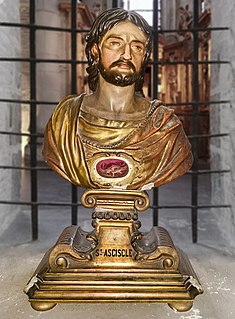 W
WSaint Acisclus was a martyr of Córdoba, in Hispania. His life is mentioned by Eulogius of Cordoba. He suffered martyrdom during the persecutions of Diocletian along with his sister Victoria. Their feast day is 17 November. There is doubt about the historical veracity of Victoria's existence, but both martyrs were honored in Mozarabic liturgical rites.
 W
WSaint Agathoclia is venerated as a patron saint of Mequinenza, Aragón, Spain. Her feast day is September 17.
 W
WSaint Caecilius is venerated as the patron saint of Granada, Spain. Tradition makes him a Christian missionary of the 1st century, during the Apostolic Age. He evangelized the town of Iliberri or Iliberis (Elvira/Granada), and became its first bishop. He is thus considered the founder of the archdiocese of Granada, established around 64 AD. Elvira’s first bishop, according to the Glosas Emilianenses, was Caecilius. Tradition states that he wrote some didactic treatises and that he was burned to death during the reign of Nero.
 W
WSaints Centola and Helen were, according to Christian tradition, two women who were martyred at Burgos in 304 AD during the persecution of Christians by Diocletian.
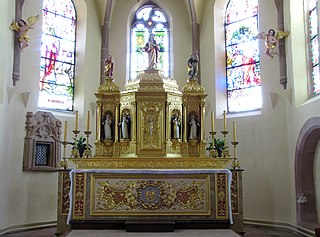 W
WSaint Columba of Sens, was a virgin and nun who was born to a noble pagan family in northwestern Spain. She left Spain for France as a child to avoid being denounced as a Christian and received the baptismal name Columba, meaning "dove" in French. She settled in Sens, France, when the Roman emperor Aurelian noticed her and tried to force her to marry his son. When she refused, he imprisoned her and after was protected from being burned alive by a female bear and a miraculous rain shower, she was finally beheaded. Columba was venerated throughout France; a chapel was later built over her relics and the Abbey of Sens, which at one time was a pilgrimage site in her honor, was eventually built there.
 W
WAccording to Christian tradition, the Seven Apostolic Men were seven Christian clerics ordained in Rome by Saints Peter and Paul and sent to evangelize Spain. This group includes Torquatus, Caecilius, Ctesiphon, Euphrasius, Indaletius, Hesychius, and Secundius.
 W
WSaint Cucuphas is a martyr of Spain. His feast day is 25 July but in some areas it is celebrated on 27 July to avoid conflict with the important feast day of Santiago, the patron saint of Spain. His name is said to be of Phoenician origin with the meaning of "he who jokes, he who likes to joke."
 W
WSaints Emeterius (Hemeterius) and Celedonius are venerated as saints by the Catholic Church. Two Roman legionaries, they were martyred for their faith around 300. They are patron saints of Calahorra, which is traditionally regarded as the place of their death.
 W
WSaint Engratia is venerated as a virgin martyr and saint. Tradition states that she was martyred with eighteen companions in 303 AD. She should not be confused with the 8th-century Spanish martyr of the same name.
 W
WSaint Eulalia, co-patron saint of Barcelona, was a 13-year-old Roman Christian virgin who suffered martyrdom in Barcelona during the persecution of Christians in the reign of emperor Diocletian, near the end of the ban on Christianity. There is some dispute as to whether she is the same person as Saint Eulalia of Mérida, whose story is similar.
 W
WSaint Euphrasius of Illiturgis is venerated as a Christian missionary of the 1st century, during the Apostolic Age. Euphrasius’ diocese was traditionally associated with Illiturgis (Iliturgi), located between Bailén and Andújar. He is said to have been martyred at Illiturgis. According to tradition, he is one of the group of Seven Apostolic Men, seven Christian clerics ordained in Rome by Saints Peter and Paul and sent to evangelize Spain. Besides Euphrasius, this group includes Sts. Hesychius, Ctesiphon, Torquatus, Indaletius, and Secundius.
 W
WSaints Facundus and Primitivus are venerated as Christian martyrs. According to tradition, they were Christian natives of León who were tortured and then beheaded on the banks of the River Cea. According to an account of their martyrdom, after the two saints were beheaded, lac et sanguis gushed from their necks.
 W
WFermin is a legendary holy man and martyr, traditionally venerated as the patron saint of Pamplona, the capital of Navarre, Spain. His death may be associated with either the Decian (250) or Diocletianic persecution (303).
 W
WSaint Fructuosus of Tarragona (Catalan: Sant Fructuós was a Christian saint, bishop and martyr. His is an important name in the early history of Christianity in Hispania. He was bishop of Tarragona and was arrested during the persecutions of Christians under the Roman Emperor Valerian. Along with him were two deacons, St. Augurius and St. Eulogius. In 259, he was questioned by the praeses Aemilianus and burned at the stake in the local amphitheatre in Tarraco. The Acta of the martyrdom of the bishop Fructuosus and his deacons Augurius and Eulogius document his legend; they are the earliest Hispanic Acta, "marked by a realistic simplicity which contrasts very favourably with many of the Acta of Diocletian's persecution".
 W
WSaint Hesychius is venerated as the patron saint of Cazorla, Spain.
 W
WSaint Honestus was, according to Christian tradition, a disciple of Saturninus of Toulouse and a native of Nîmes.
 W
WSaints Justa and Rufina (Ruffina) are venerated as martyrs. They are said to have been martyred at Hispalis (Seville) during the 3rd century.
 W
WSaints Justus and Pastor are venerated as Christian martyrs.
 W
WSaint Lawrence or Laurence was one of the seven deacons of the city of Rome, Italy, under Pope Sixtus II who were martyred in the persecution of the Christians that the Roman Emperor Valerian ordered in 258. Lawrence encountered the future Pope Sixtus II, who was of Greek origin and one of the most famous and highly esteemed teachers, in Caesaraugusta. Eventually, both left Spain for Rome. When Sixtus became the Pope in 257, he ordained Lawrence as a deacon, and though Lawrence was still young appointed him first among the seven deacons who served in the cathedral church.
 W
WSaint Leocadia is a Spanish saint. She is thought to have died on December 9, ca. 304, in the Diocletian persecution.
 W
WSaint Maginus was a Catalan hermit in the late third and early fourth centuries in Tarragona. Orphaned early, he was a hermit in a cave on Mount Brufaganya for thirty years.
 W
WSaint Mariña of Aguas Santas is a virgin martyr associated with the town of Aguas Santas, in the province of Ourense. The story of her life as it has been preserved is a mixture of fact and fiction. She is venerated as one of nine sisters, including Quiteria and Liberata.
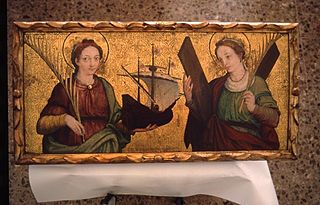 W
WMatrona of Barcelona or Matrona of Thessalonica is a saint of the Roman Catholic Church and the Eastern Orthodox Church. She was recognized as a saint pre-congregation.
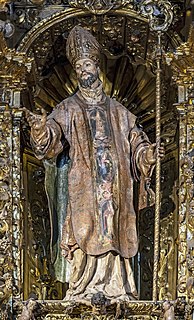 W
WSaint Pacian (Pacianus) was a bishop of Barcelona during the fourth century. He was bishop from about 365 AD to 391 AD, succeeding Praetextatus (Pretextat), who had attended a church council at Sardica in 347 AD and who is the first recorded bishop of Barcelona.
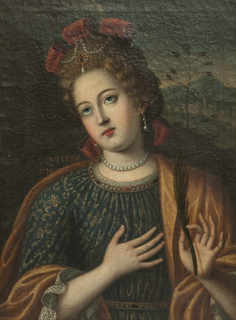 W
WSaint Quiteria was a second-century virgin martyr about whom nothing is certain except her name and her cult. She appears in the Roman Martyrology, but not in any other ancient calendars.
 W
WSaint Secundus or Secundius is venerated as a Christian missionary and martyr of the 1st century, during the Apostolic Age. He evangelized the town of Abula, which has been identified as either Abla or Ávila, and became its first bishop.
 W
WAccording to Christian tradition, the Seven Apostolic Men were seven Christian clerics ordained in Rome by Saints Peter and Paul and sent to evangelize Spain. This group includes Torquatus, Caecilius, Ctesiphon, Euphrasius, Indaletius, Hesychius, and Secundius.
 W
WSaint Torquatus is venerated as the patron saint of Guadix, Spain. Tradition makes him a Christian missionary of the 1st century, during the Apostolic Age. He evangelized the town of Acci, identified as Guadix, and became its first bishop.
 W
WSaint Valerius of Saragossa is the patron saint of Saragossa. He was bishop of this city from 290 until his death. He assisted at the Council of Elvira. His feast day is January 29.
 W
WSaint Vincent of Saragossa, the Protomartyr of Spain, was a deacon of the Church of Saragossa. He is the patron saint of Lisbon and Valencia. His feast day is 22 January in the Roman Catholic Church and Anglican Communion and 11 November in the Eastern Orthodox Churches. He was born at Huesca and martyred under the Emperor Diocletian around the year 304.
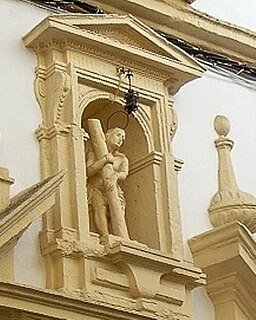 W
WSaint Zoilus is venerated as a saint by the Catholic Church. Christian tradition states that he was a young man martyred with nineteen others at Córdoba, Spain under Diocletian.